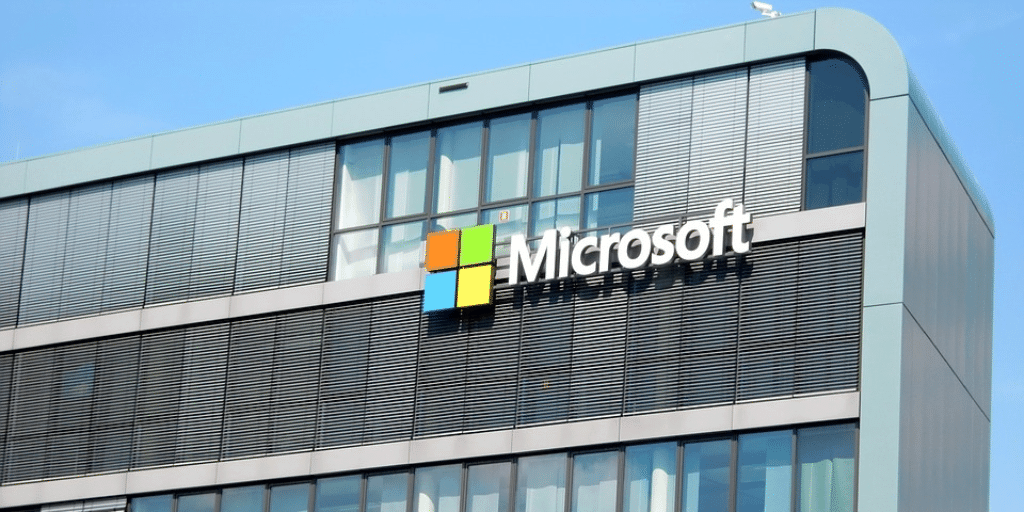
Microsoft is a large, multinational corporation headquartered in Seattle, Washington, which provides a wide range of computing products through several different divisions. Named one of the World’s Best Multinational Workplaces in 2011, some of their most popular products include Microsoft Windows, Microsoft Office, and Xbox. In recent years, the computing giant has revamped its recruitment and employer branding strategies, and social media is at the forefront.
Strategy:
Microsoft’s old online recruiting presence had become outdated and was a navigational nightmare for job seekers, who suffered from content overload and lack of an organized, central careers hub. Microsoft now takes a global approach to recruitment, rather than having different careers sites for different countries and even different business units within the same country.
Microsoft embarked on a significant recruitment overhaul nearly five years ago, as competition from companies like Google made the battle for top talent even more challenging. The foundation of this recruitment marketing initiative was made up of critical business and marketing goals such as creating a consistent global message, managing their employer brand and improving the user experience. The new and improved Microsoft Careers site is a pleasure to navigate, and the company’s online presence also includes channels like Twitter, Facebook, LinkedIn and YouTube to engage, impress and inspire potential job candidates. In 2010, Microsoft increased new hires by 300%, and the company is expecting continuous improvement as the social recruitment techniques and tools get more sophisticated.
Twitter Strategy:
The @MicrosoftJobs Twitter account has over 80,000 followers and is a place where job seekers can receive timely information about company news and job vacancies. The bio for the account makes its purpose quite clear – Microsoft wants candidates to ‘find out what it’s really like to work here.’
How shaping and defining #Skype became a designer’s most exciting career opportunity: https://t.co/P6HB2HATBw pic.twitter.com/C9NySpkxi0
— Microsoft Life (@MicrosoftLife) February 18, 2016
Facebook Strategy:
With over half a million ‘likes,’ Microsoft’s Careers page on Facebook is a place where interested candidates can find information about job opportunities and receive updates about what’s new at the company. The Careers page provides job seekers with a Frequently Asked Questions tab, where there is more detailed information about the Microsoft hiring process.
Microsoft also has a separate Facebook page for Women at Microsoft, which is nearly as popular as the main Microsoft Careers page. The purpose of this page is to provide ‘unique insight into how women at Microsoft are helping to change the way we live, work and play.’
So #excited to b part of the largest #hackathon in the 🌎 #MicrosoftLife 400 cities 80 countries #letshack @technolochicas @MicrosoftWomen pic.twitter.com/UZqxDMG6B3
— Bea 👩🏻💻 (@beagandica) July 24, 2017
LinkedIn Strategy:
The Microsoft Careers page on LinkedIn, which proudly boasts the headline ‘Do What You Love,’ provides information about job openings, benefits, and life at Microsoft to the company’s nearly 4 million followers. The page also provides opportunities to contact Microsoft recruiters, as well as links to videos and the company’s other social media sites.
The LinkedIn page is a prime source for candidates, and the company’s recruiters frequently use the range of sourcing tools made available through the site. In one year, Microsoft saved £60,000 on recruitment fees by using LinkedIn to find candidates with rare specialist skills for a new project.
Microsoft also uses LinkedIn groups to engage potential candidates. The company uses both generic (ie, Game Developers) and Microsoft-specific groups, and relevant content is shared in a variety of ways, including using RSS feeds from industry publications.
YouTube Strategy:
The Microsoft Careers YouTube channel has 115 uploaded videos that provide international perspectives on a variety of subjects, including internships, culture and diversity at Microsoft. Videos such as ‘Work Meets Life at Microsoft’ help contribute to the company’s employer brand by providing authentic employee perspectives on what it’s truly like to work there.
Blogging Strategy:
Another way Microsoft manages their employer brand is through a strong blogging presence. The purpose of the Microsoft JobsBlog is to allow interested candidates to ‘Experience Microsoft.’ The blog’s Bits & Bytes section allows readers to ‘get a glimpse into life at Microsoft from the employees who work here.’ A variety of employee bloggers provide inside perspectives on Microsoft, covering a range of issues like women in the technology sector, and providing practical advice to job seekers, such as how to prepare for a job interview.
There is also a section called Dear JobsBlog, where readers can ask Microsoft recruiters specific questions pertaining to their job search. Examples of past questions are ‘Why work for Bing vs. Google?’ ‘What are some common interview mistakes?,’ and other inquiries about different types of jobs at Microsoft.
What We Can Learn from Microsoft:
- Collaboration is key. The success of social recruiting efforts at Microsoft is largely due to collaboration with various marketing and staffing groups throughout the company and even the external community. By bringing a diverse group of people together to brainstorm and share the results of new efforts, the recruitment strategy is better able to adapt to the ever-changing environment.
- Recruitment is a complex process. It is essential for an effective recruitment strategy to include a variety of tools in order to reach the right audience. As competition in the labor market increases, so does the complex nature of finding, engaging and ultimately hiring the best talent.
- The importance of community. A major part of Microsoft’s online recruitment strategy is their talent network. The site provides candidates with helpful information like how to succeed in an interview with the company. Through blogging and interacting with external communities through social media, Microsoft is able to engage applicants in a more effective way.
- Communicate culture and values. The concept of ‘fit’ is crucial when it comes to recruiting new employees for any organization. Microsoft has done an excellent job crafting their employer brand by sharing authentic employee experiences through blog posts, and by communicating their values through efforts like their Women at Microsoft Facebook page.
- Link recruitment efforts with the bigger picture. Microsoft has realized the usefulness of tying recruiting efforts into particular projects they are working on. For instance, when developing a new Xbox product, key talent with the right skills was attracted to the company’s career site through social media advertising and project-specific blog posts.
Further reading at How Microsoft Aligns Employer Brand with Company Mission.
- Tagged With:
- Case Study
- Employer branding
- Microsoft
STAY CONNECTED.
DATA-DRIVEN EMPLOYER
BRAND INSIGHTS.
Our newsletter is exclusively curated by our CEO, Jörgen Sundberg, for leaders who make decisions about talent. Subscribe for updates on The Employer Branding Podcast, new articles, eBooks, research and events we’re working on.



